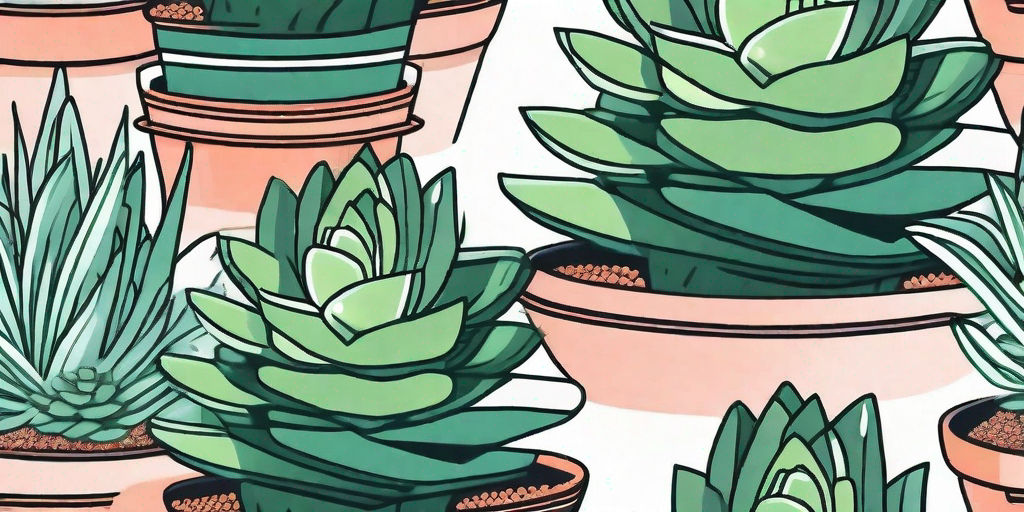
Welcome to the world of succulents, where the plants are as quirky as their names. Today, we're diving into the fascinating world of the Chinese Dunce Cap, a unique succulent that's sure to add a touch of whimsy to your indoor garden. So, buckle up, plant enthusiasts, as we embark on this botanical journey!
What is a Chinese Dunce Cap?
Don't let the name fool you. The Chinese Dunce Cap (Orostachys iwarenge) is anything but dull. This succulent is a small, rosette-forming plant native to the mountainous regions of China and Korea. Its name comes from the conical shape of its leaves, which resemble a dunce cap. And yes, it's as adorable as it sounds.
But the Chinese Dunce Cap isn't just a pretty face. It's also a hardy plant that can withstand a variety of conditions, making it a great choice for both beginner and seasoned gardeners. Plus, its unique appearance makes it a conversation starter. Who wouldn't want to talk about a plant that looks like a tiny green wizard's hat?
How to Care for Your Chinese Dunce Cap
Lighting
Like most succulents, the Chinese Dunce Cap loves the sun. It thrives in bright, indirect light, but can also tolerate some direct sunlight. However, be careful not to expose it to harsh, midday sun, as this can cause the leaves to scorch. Instead, aim for a spot with morning or late afternoon sun.
If you're growing your Dunce Cap indoors, place it near a south or east-facing window. If natural light is scarce, you can supplement with a grow light. Remember, a happy Dunce Cap is a sun-kissed Dunce Cap!
Watering
When it comes to watering, the Dunce Cap follows the typical succulent rule: less is more. Overwatering can lead to root rot, which is the equivalent of a death sentence for succulents. So, how often should you water your Dunce Cap? The answer depends on a few factors, including the size of the plant, the size of the pot, and the humidity of your home.
A good rule of thumb is to water your Dunce Cap when the soil is completely dry. This usually means watering once every 1-2 weeks in the summer, and once every 2-4 weeks in the winter. Remember, it's better to underwater than overwater. When in doubt, let it drought!
Soil and Potting
The Chinese Dunce Cap prefers well-draining soil to prevent water-logging. A standard succulent or cactus mix should do the trick. If you're feeling adventurous, you can make your own mix using one part potting soil, one part coarse sand, and one part perlite or pumice.
As for potting, choose a container with drainage holes to allow excess water to escape. The size of the pot should be just slightly larger than the root ball of the plant. This helps to prevent overwatering and promotes healthier root growth. Remember, a cozy Dunce Cap is a happy Dunce Cap!
Propagating Your Chinese Dunce Cap
One of the joys of owning a Chinese Dunce Cap is watching it multiply. This succulent propagates easily from offsets, which are small rosettes that form at the base of the mother plant. With a little patience and care, you can have a whole army of Dunce Caps in no time!
To propagate your Dunce Cap, simply remove an offset from the mother plant, let it dry for a few days to form a callus, then plant it in well-draining soil. Keep the soil slightly moist until the offset has rooted. Before you know it, you'll have a new baby Dunce Cap to add to your collection.
Frequently Asked Questions
Why are the tips of my Dunce Cap turning brown?
Brown tips can be a sign of sunburn or overwatering. If your Dunce Cap is getting too much sun, move it to a spot with less direct light. If overwatering is the issue, let the soil dry out completely before watering again.
Can I grow a Chinese Dunce Cap outdoors?
Yes, the Dunce Cap can be grown outdoors in USDA hardiness zones 5-9. However, it may need protection from extreme heat and frost.
Does the Chinese Dunce Cap flower?
Yes, the Dunce Cap produces small, star-shaped flowers in late summer or early fall. The flowers are typically white or pink and are a delightful sight to behold.
Conclusion
So there you have it, folks. The Chinese Dunce Cap: a quirky, resilient, and downright charming addition to any indoor garden. Whether you're a seasoned plant parent or a budding green thumb, this succulent is sure to bring a smile to your face and a touch of magic to your home.
So, what are you waiting for? Get your green on and add a Chinese Dunce Cap to your plant family today!















